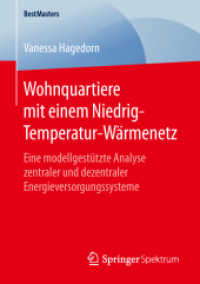- ホーム
- > 洋書
- > ドイツ書
- > Social Sciences, Jurisprudence & Economy
- > Education Science / Pedagogic
- > adult education
Full Description
This book offers various ways in which analyzing professional experience and activity in simulation training makes it possible to describe practice-based learning affordances and processes.








